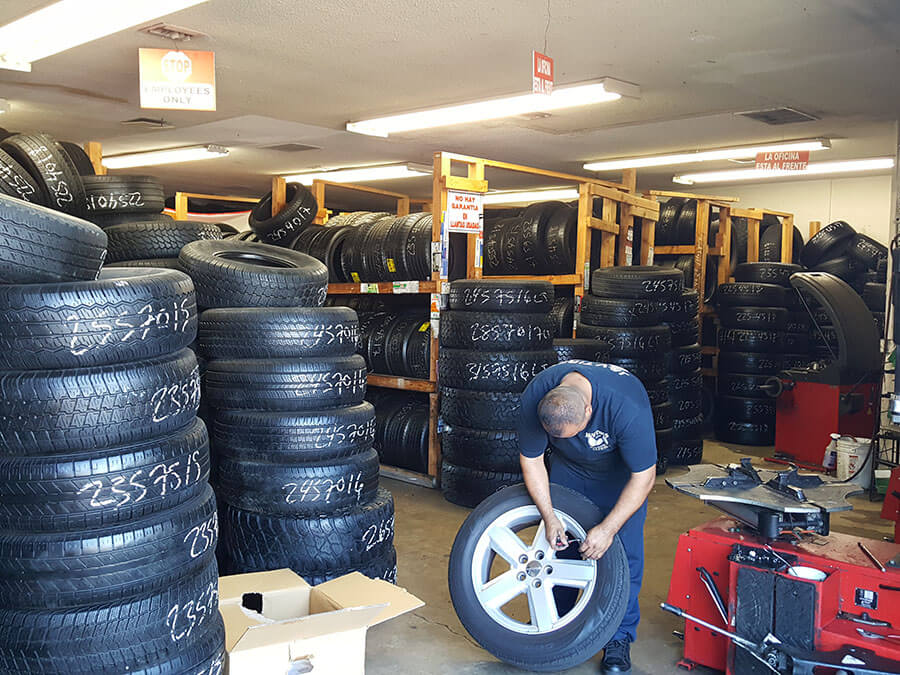Tire Service: The Impact of Weather
When it comes to making certain optimal efficiency and safety when traveling, comprehending the effect of weather on tire solution is vital. From scorching warm to icy roads, each climate aspect can dramatically influence tire performance and overall driving experience. By delving right into the effects of varying climate condition on tires, motorists can acquire beneficial understandings that might boost their vehicle's efficiency and long life. In this discussion, we will certainly explore the intricate relationship between weather condition conditions and tire service, losing light on the significance of weather-specific tire maintenance methods and considerations.
Warmth and Tire Efficiency
When revealed to high temperatures, tires experience modifications in efficiency that can significantly influence car safety and handling. The heat generated from extended driving or warm climate problems creates the tire rubber to soften, leading to reduced step life and boosted wear.
Additionally, heats can accelerate the procedure of tire aging, triggering the rubber to weaken quicker. This can result in cracks, bulges, and various other types of damages that jeopardize the structural honesty of the tire. To minimize the impacts of warmth on tire performance, motorists must consistently examine their tire pressure, revolve tires to guarantee even wear, and inspect for any indications of damages. Furthermore, making use of tires particularly created to stand up to heats can help preserve ideal performance and safety and security when traveling.
Cold Climate Results
Cold weather condition problems can have a substantial influence on tire efficiency and safety and security. As temperatures drop, tire rubber can set, bring about decreased grip on icy or snow-covered roads. In cold weather condition, tires might also lose air stress much more swiftly, which can impact taking care of and gas effectiveness. Additionally, chilly temperature levels can trigger tire sidewalls to tense, boosting the risk of damages from craters or various other roadway hazards.
To mitigate the effects of cold weather condition on tires, it is important to routinely examine tire stress and inflate them to the producer's advised levels. Using winter months or all-season tires designed for winter problems can additionally improve grip and grip on icy or snowy roadways - discount tires morris il. Appropriate tire upkeep, including regular examinations for wear and damage, ends up being a lot more vital during cooler months to ensure ideal performance and safety and security
Rainy Conditions Influence
Tires with damaged footsteps are more prone to hydroplaning, where a layer of water builds up in between the tire and the roadway surface, leading to loss of traction. To battle this, chauffeurs should on a regular basis check their tires for appropriate walk deepness and take into consideration investing in tires especially made for Read More Here wet conditions.

Snow and Tire Safety
Snow-covered roadways position one-of-a-kind obstacles for vehicle drivers, emphasizing the relevance of appropriate tire selection and upkeep. When driving in snowy problems, having the right tires can make a considerable distinction in safety and security and efficiency. Wintertime tires are developed with special rubber substances and tread patterns to offer far better grip on snow and ice contrasted to all-season tires. The much deeper footsteps and sipes of winter tires assist grip the roadway much better, lowering the risk of sliding and slipping.
Along with using winter months tires, it is vital to ensure they are effectively inflated. Winter can create tire pressure to drop, affecting traction and handling (discount tires morris il). Frequently checking and keeping the right tire pressure is vital for ideal performance in snowy problems

Weather-Related Tire Upkeep
Weather-related tire look at this website upkeep incorporates an array of methods aimed at ensuring optimal tire feature and durability in various weather circumstances. One key element of weather-related tire maintenance is tire stress law. Evaluating tire step frequently and get more replacing tires when tread wear gets to a specific depth is vital for maintaining traction and security in adverse weather.
Conclusion
Finally, climate condition have a considerable influence on tire performance and safety and security. From heat influencing tire stress and use to cold weather reducing traction, it is important to think about the climate when keeping and making use of tires. Wet conditions can decrease grip and cause hydroplaning, while snow can raise the threat of crashes if tires are not effectively furnished. Weather-related tire maintenance is critical in ensuring optimum performance and safety when driving.
In this conversation, we will explore the intricate partnership in between weather condition conditions and tire service, dropping light on the importance of weather-specific tire maintenance practices and considerations.
